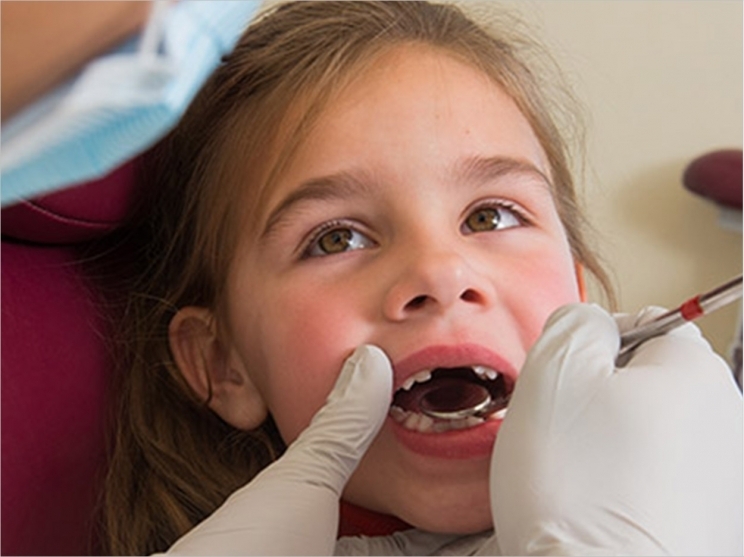
State laws that encourage school-age children to be screened for dental disease have mixed results connecting children with needed care, according a report by the Children’s Dental Health Project (CDHP) released as part of National Children’s Dental Health Month (NCDHM), recognized each February.
Dental screening laws (DSLs) aim to improve students’ access to oral healthcare and address dental disease among children. However, CDHP’s research finds that several factors limit DSLs from fulfilling these goals.
Screening laws exist in the District of Columbia and 14 states: California, Georgia, Illinois, Iowa, Kansas, Kentucky, Nebraska, New York, Oregon, Pennsylvania, Rhode Island, South Carolina, Utah, and West Virginia. Over the last 10 years, only three states have enacted DSLs. By the start of 2019, DSLs had been proposed in two additional states, Connecticut and Michigan.
The report reveals that several factors limit states’ successful implementation of screening laws. Barriers include difficulties in creating a mechanism to facilitate referrals for children who need follow-up care, failures to use screening data to evaluate the impact of DSLs, and the limited capacity of state oral health programs to coordinate or implement these laws. States also may lack an adequate number of dental providers participating in Medicaid, directly limiting students’ ability to obtain treatment if their screening identifies an oral health need.
“States should explore ways to make DSLs more family friendly. Finding a Medicaid-participating provider and dealing with transportation hurdles are a few of the challenges that can make it hard for parents to get their kids screened or take them for follow-up dental care,” said Colin Reusch, CDHP’s director of policy.
“DSLs should be written with an understanding of these challenges. Policymakers and state agency officials should consider strategies to bring services to families where they are, using existing touchpoints like school nurses, pediatricians, or even community health workers to conduct oral health assessments and connect kids to care,” said Reusch.
“State dental programs must have the mechanisms not only to have children screened, but also to connect children in need to dental homes. Dental homes become the permanent place where children can see dental providers for preventive services but also receive the restorative care that they need to treat disease,” said report author Eleanor Fleming, PhD, DDS, MPH.
The report offers recommendations to make DSLs more effective in supporting children’s oral health, advising stakeholders to:
- Solicit and share best practices: For legislation to be effectively written and implemented, advocates exploring DSLs should learn from the experiences of those who have already developed these laws.
- Evaluate a DSL’s impact: This includes sharing and analyzing screening data and expanding a state’s oral health program’s capacity for evaluation. Such assessments may produce insights applicable to other oral health efforts.
- Build diverse coalitions: Engaging non-dental providers and school nurses, for example, can ensure a proposal is designed to meet its core objectives. Those seeking to enact a DSL should also seek input from parents, patient navigators, or others who work closely with families on health challenges.
- Use DSLs as opportunities to engage both dental and medical providers: Advocates should ensure that a DSL allows medical providers to perform screenings, enhancing the likelihood that more kids get screened. The passage of a DSL could be cited to encourage more dental and medical providers to participate in Medicaid. In addition, stakeholders could also consider using these laws to support a statewide dental needs assessment that identifies and addresses gaps in the dental safety-net workforce.
Fleming, a dental public health resident at Boston University, added that each state must take its own unique policy landscape into account when considering whether to pursue a dental screening law.
“This work affirmed to me that if you have observed one state or local dental program, you have seen one program,” Fleming said. “All programs are different, and depending on state laws, dental programs face a vast array of dental and public health opportunities and challenges.”
In many communities, children in struggling families may not have a dental home and may face other barriers to staying cavity-free. If left untreated, dental disease can interfere in a child’s education and harm healthy development, CDHP says. While nearly nine in 10 children have dental insurance, CDHP adds, whether through private plans, Medicaid, or the Children’s Health Insurance Program, maintaining coverage doesn’t guarantee access to services.
Research for the CDHP report was gathered primarily from telephone interviews with 18 leaders, mostly state dental and public health officials. Interviews also were conducted with individuals representing organizations focused on school-based health programs and children’s advocacy.
Related Articles
Guardians of the Smile Creates Positive Oral Health Habits in Children
Report Supports Benefits of School-Based Sealant Programs
School-Based Cavity Prevention Benefits from Combined Techniques











